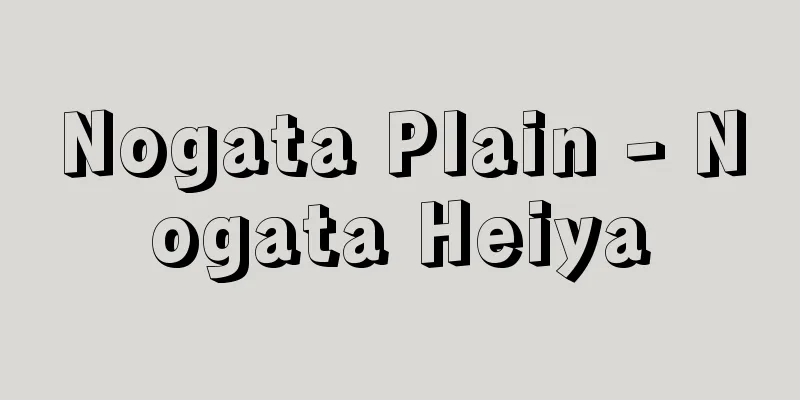Reproduction

|
The act of producing something similar to the original, and what has been produced. In law, it refers to any act of reproducing a copyrighted work in a tangible form by printing, photographing, recording, filming, etc., and the right of reproduction is the most basic and important right derived from copyright. When it comes to artworks and fine arts, copying, replicas, and other handcrafted copies, in which someone else reproduces the original using similar technical means, have been practiced since ancient times. When the original has been lost, such as in the Roman replicas of Greek sculptures, these copies are themselves valuable academically and artistically, and when it is impossible to appreciate the original, such as in the replicas of the Takamatsuzuka Tomb murals, they are also an essential means of communication. Meanwhile, the invention of printing techniques such as woodblock, copperplate, and lithograph printing encouraged the popularity of reproductions, especially of flat paintings. Although both are called reproductions, a distinction needs to be made between one-of-a-kind copies and mass-produced reproductions. Also, copies of three-dimensional objects such as sculptures, buildings, monuments, machines, and tools are called replicas. With the development of photography, including the invention of film, and the invention of sound reproduction (records), reproduction art has come to occupy a unique position among various artistic methods in the art of the 20th century. In addition, with the development and spread of advanced digital technology that appeared in the 1990s, it has become easy for individuals to reproduce print, sound, video, etc., and the issue of reproduction rights has become extremely complicated. [Hata Teruo] "Art in the Age of Mechanical Reproduction" by Benjamin Walter, edited and annotated by Motokazu Sasaki (1999, Shobunsha) [References] | | | |Source: Shogakukan Encyclopedia Nipponica About Encyclopedia Nipponica Information | Legend |
|
もとのものと同様なものを製作すること、またその製作されたもの。法律においては、印刷、写真、録音、録画などの方法によって著作物を形のあるものにそのまま再製するすべての行為をさし、複製権は著作権から派生する諸権利中もっとも基本的かつ重要な権利になっている。 芸術作品や美術作品においては、模写、模造、模刻など、オリジナルoriginal(原作)を別人が同様の技術手段によって再製する手仕事的なコピーcopyが古くから行われていた。このコピーは、ギリシア彫刻のローマ時代模刻のように、原作が失われている場合、それ自身学術的にも芸術的にも価値があるし、高松塚古墳壁画の模写のように、実物の鑑賞が不可能な場合、伝達にとっての不可欠な手段でもある。一方、木版、銅版、石版などの印刷技術の発明は、とくに平面的な絵画のリプロダクションreproductionの盛行を促した。ともに複製とよばれるが、一点もののコピーと量産的なリプロダクションは区別される必要がある。 また、彫刻、建造物、記念碑、機械、道具など、立体的なものの複製はレプリカreplicaとよばれる。 映画の発明を含む写真技術の発達、さらに音の複製(レコード)の発明によって、リプロダクションによる複製芸術の占める地歩は、20世紀の芸術のなかで、各種の芸術方法と並んで独自のものとなった。加えて1990年代に登場したデジタルによる高度な技術機器の発展と普及により、印刷、音響、映像などを個人で複製することが容易になったことから複製権の問題はきわめて複雑化している。 [畑 暉男] 『ベンヤミン・ヴァルター著、佐々木基一編・解説『複製技術時代の芸術』(1999・晶文社)』 [参照項目] | | | |出典 小学館 日本大百科全書(ニッポニカ)日本大百科全書(ニッポニカ)について 情報 | 凡例 |
<<: Fù xìng shū (English: Book of Regeneration)
Recommend
"Ezo Language Collection" - Ezogoshu
...The editor, Kumajiro Uehara, was an Ezo interp...
World Wide Fund for Nature
A global nature conservation organization, former...
"Diseases caused by lead monoxide fumes and miners' lung fatigue" - Miners' lung fatigue and illnesses caused by lead monoxide fumes
…G. Agricola's 16th century book De re metall...
Kabuki customs
...It was only after the Taisho era that theaters...
Hiroshi Ando
…Published in 1915. The editor, Hiroshi Ando, i...
Along Bay - Along Wan (English name) Vinh A Long
A bay in northeastern Vietnam. It faces a coastlin...
Calathea makoyana - Calathea makoyana
...Although it is easy to confuse it with the Mar...
Chelate Complex - Chelate Complex
A ligand that can bind to one metal atom simultan...
Euplexaura sparsiflora (English spelling)
… [Minoru Imajima]. … *Some of the terminology th...
Sliding
...Materials transported by traction are called s...
Lake Manasa (English spelling)
A sacred lake in Indian mythology, it is located a...
Uji River
A midstream river in the Yodo River system. The S...
Grigorii Ivanovich Shelikhov
1747‐95 Russian fur trader and explorer. Also spel...
Pietro Metastasio
Italian poet and playwright. Born on January 3rd ...
Copper shale (copper-bearing shale)
Permian shale rich in heavy metals found in centra...









![Bekkai [town] - Bekkai](/upload/images/67ccc8bb2322a.webp)